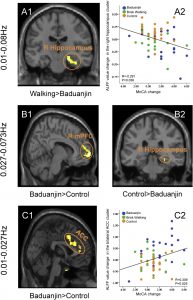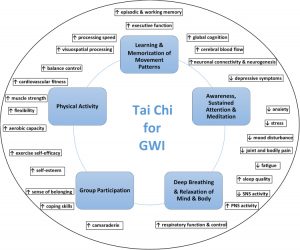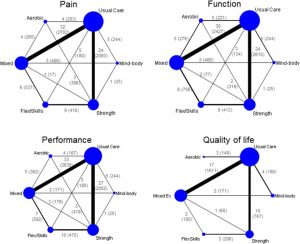Improve Well-Being with a Smartphone Mindfulness App
By John M. de Castro, Ph.D.
“What do you do when you can’t afford therapy but are struggling to handle your mental illness alone? You could download an app. In recent years, there’s been a proliferation of mental health apps available to smartphone users. These reasonably-priced, or most often free, mental health apps offer a wealth of resources that make therapeutic techniques more accessible, portable, and cost-effective.” – Jessica Truchel
Mindfulness training has been shown through extensive research to be effective in improving physical and psychological health. The vast majority of the mindfulness training techniques, however, require a trained teacher. This results in costs that many college students can’t afford. In addition, the participants must be available to attend multiple sessions at particular scheduled times that may or may not be compatible with their busy college schedules and at locations that may not be convenient. As an alternative, Apps for smartphones have been developed. These have tremendous advantages in decreasing costs, making training schedules much more flexible, and eliminating the need to go repeatedly to specific locations. But the question arises as to the effectiveness of these Apps in inducing mindfulness and improving psychological health in college students.
In today’s Research News article “Intermittent mindfulness practice can be beneficial, and daily practice can be harmful. An in depth, mixed methods study of the “Calm” app’s (mostly positive) effects.” (See summary below or view the full text of the study at: https://www.ncbi.nlm.nih.gov/pmc/articles/PMC6928287/?report=classic), Clarke and Draper recruited healthy college students and had them complete a 7-day mindfulness training with the “Calm” smartphone app. The program consists of once a day 10-minute trainings. The students completed measures before and after training of mindfulness, well-being, and self-efficacy.
They found that after the 7-day training there were significant increases in mindfulness, well-being, and self-efficacy. They report that students who only completed 1 or 2 of the 7 “Calm” modules did not obtain the benefits. It appears that completing 3 or more of the modules is necessary to improve the students’ psychological health.
This is a brief study without a comparison condition and so the results must be interpreted cautiously. But, a number of prior studies have demonstrated that mindfulness trainings with smartphone apps are effective in improving well-being. In addition, the students who did not complete a significant number of the 7 training modules did not show improvements in psychological health. So, it would appear that the use of smartphone apps are a convenient method to teach mindfulness and this can have a significant impact on the psychological health of the users.
So, improve well-being with a smartphone mindfulness app.
“Mental health apps can be effective in making therapy more accessible, efficient, and portable.” – Mary Let
CMCS – Center for Mindfulness and Contemplative Studies
This and other Contemplative Studies posts are also available on Google+ https://plus.google.com/106784388191201299496/posts and on Twitter @MindfulResearch
Study Summary
Clarke, J., & Draper, S. (2019). Intermittent mindfulness practice can be beneficial, and daily practice can be harmful. An in depth, mixed methods study of the “Calm” app’s (mostly positive) effects. Internet interventions, 19, 100293. doi:10.1016/j.invent.2019.100293
Abstract
Objectives
Despite a weak evidence base, daily use of mindfulness-based self-help smartphone applications (apps) is said to promote wellbeing. However, many do not use these apps in the way that app developers and mindfulness proponents recommend. We sought to determine whether the “Calm” app works, and whether it does so even when it is used intermittently.
Methods
Employing a mixed-methods design, we recruited a self-selected sample of 269 students from a Scottish university (81% female, 84% white, mean age 23.89) to engage with a seven-day introductory mindfulness course, delivered using Calm, currently one of the most popular, yet under-researched, apps.
Results
Daily course engagement was associated with significant gains in wellbeing (p ≤.001, d = 0.42), trait mindfulness (p ≤.001, d = 0.50) and self-efficacy (p ≤.014, d = 0.21). Intermittent course engagement was also associated with significant gains in wellbeing (p ≤.028, d = 0.34), trait mindfulness (p ≤.010, d = 0.47) and self-efficacy (p ≤.028, d = 0.32). This study is therefore the first to demonstrate that the Calm app is associated with positive mental health outcomes. It also shows that regular use is not essential. A thematic analysis of qualitative data supported these quantitative findings. However it also revealed that some participants had negative experiences with the app.
Conclusions for practice
Mindfulness-based self-help apps such as Calm have the potential to both enhance and diminish users’ wellbeing. Intermittent mindfulness practice can lead to tangible benefits. Therefore, mindfulness proponents should not recommend daily practice, should increase awareness of the potential for negative outcomes, and resist the idea that mindfulness practice works for everyone. Developers of mindfulness apps ought to make specific features customisable in order to enhance their effectiveness.
https://www.ncbi.nlm.nih.gov/pmc/articles/PMC6928287/?report=classic









